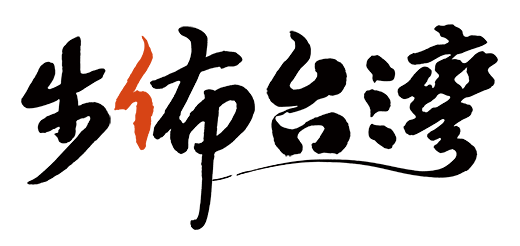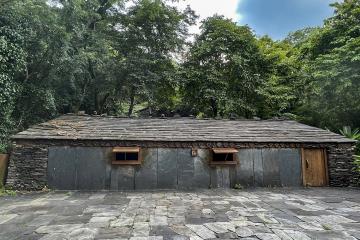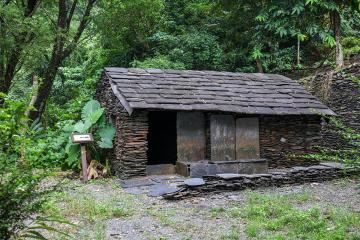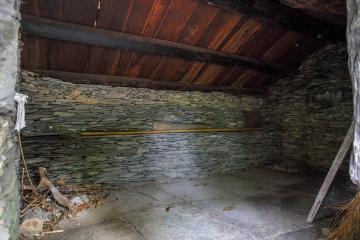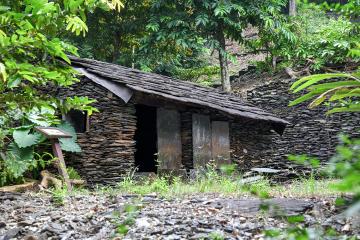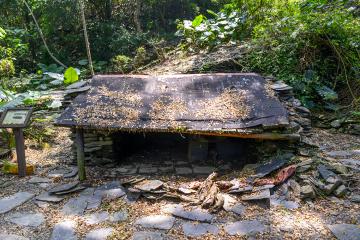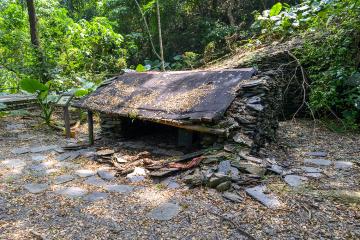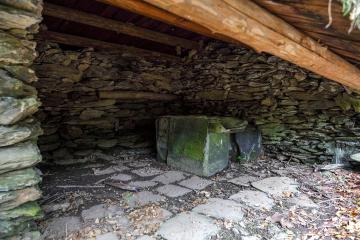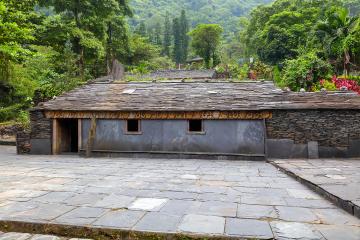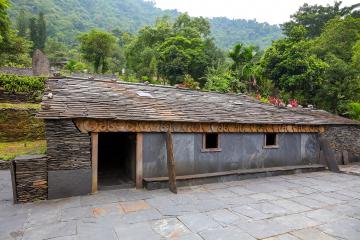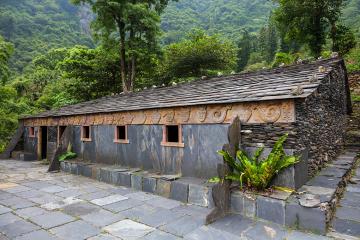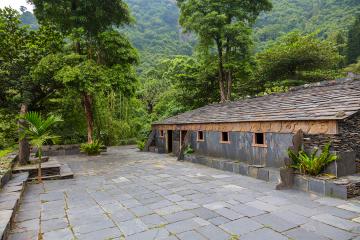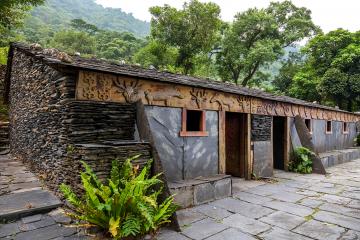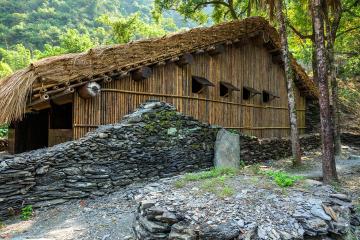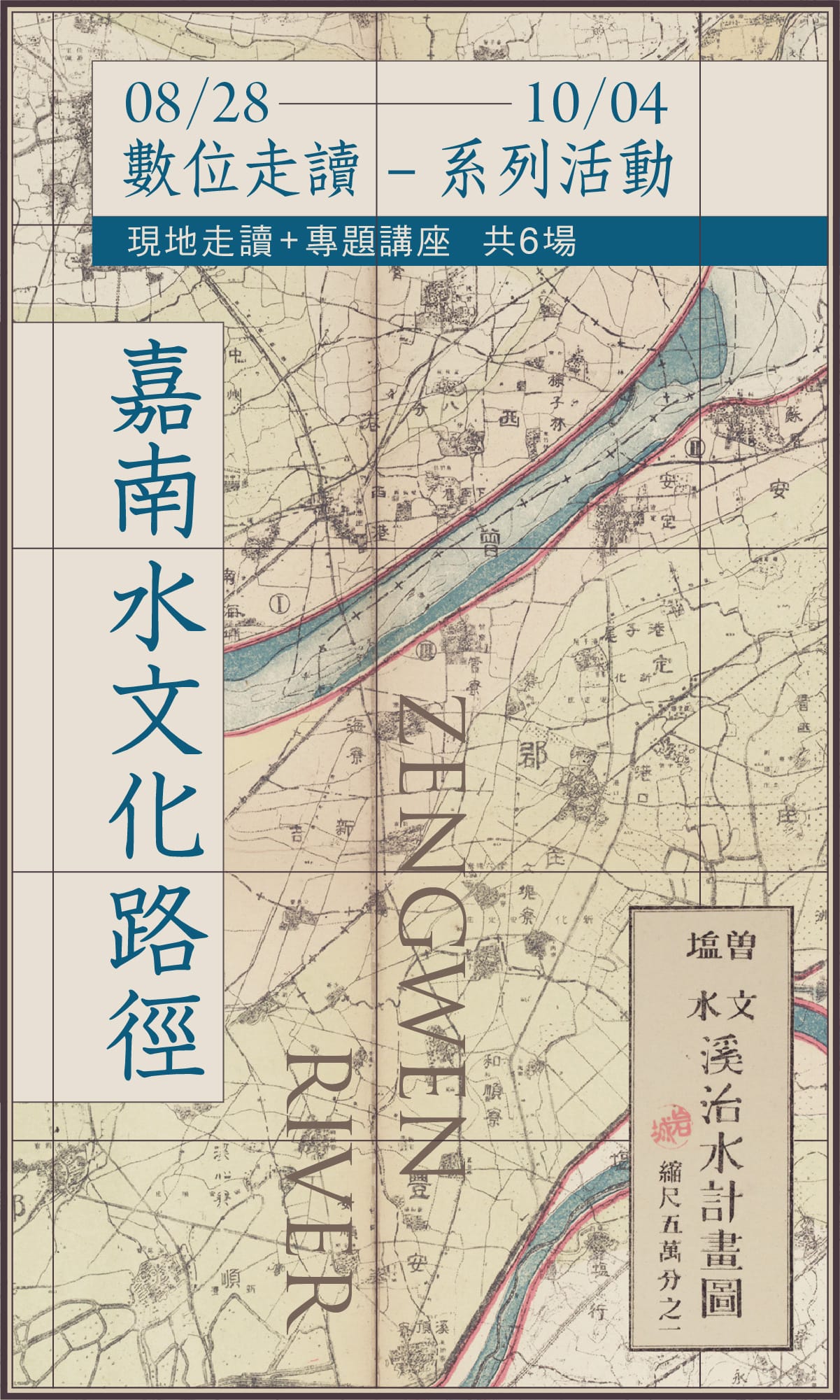景點介紹
魯凱族的家屋以「石板屋」最具代表性,但並非所有的魯凱族人都居住於石板屋中,因為魯凱族有東魯凱群、西魯凱群以及下三社群等三大族群,生活環境的差異使得他們也發展出不同的聚落與文化。
西魯凱族群以及下三社族群居住於臺灣南部地區的低海拔山區,氣候炎熱、潮濕,同時因為雨量多,當地多黏板岩質的土壤容易崩落,因此魯凱族發展出以崩落石板為建材的石板屋,不僅善用自然資源,同時石板屋冬暖夏涼,適合當地的氣候,石板屋可說是魯凱族獨特生活智慧的展現。
東魯凯群就因為石板取得不易,而以木材、竹子為主要房屋建材,同時因為強敵環伺而發展出青少年集會所。
"Slate houses" are typical Rukai family dwellings. However, not all of the Rukai people live in slate houses. Rukai can be divided into three groups, the East Rukai, the West Rukai, and the Hsiasan Group. Their villages and cultures vary with their living environment.
Rukai people of the West and Hsiasan group live in the mountainous areas between 500 to 1,000 meters above sea level in southern Taiwan. With heat, humidity, and much rain, the soil, clay and slate there crumble easily. As a result, Rukai people use slates as building materials. Slate houses are warm in winter and cool in the summer, which is a clear demonstration of the Rukai's wisdom.
East Rukai Group uses wood and bamboo as building materials because it is difficult for them to obtain slates. Also, due to their living area, they have youth assembly halls for defending against enemies.
吉露頭目家屋
屋前有寬廣前庭,進入正室前需先經過附屬工作房,此為魯凱族頭目家屋特色。
正室後方以柱樑區隔為兩空間,中柱雕刻是最顯著的焦點,掛著禮刀與獸骨,後方床鋪牆面有成排的陶壺架,為家中最神聖之處;靠窗的前室有兩個石板床,兩床間為起居間。
Traditional Chief’s House of Jilu Village
The features of a Rukai chief’s house are the wide front courtyards and work sheds by the main house. The house is divided into front and rear by pillars. The pillar in the middle is the most prominent as it has carvings and hanging ceremonial knives and animal skulls. There are rows of pottery pots on the wall behind the bed, which is the most sacred place in the house. The living room in the front has two slate beds by the window.
工作小屋
為族人織布或工作的空間,魯凱人有不得於家中織布的禁忌,爰另建工作小屋,通常可容納兩至三名族人。
Work Shed
There is a taboo to do weaving at home, so they build another work shed, which accommodates up to three people.
鍛冶小屋
魯凱族善於製造刀具,鍛冶小屋及用作鐵器鍛冶成刀場所。建築多以茅草覆頂,僅有立柱而無牆面,屋內設有爐灶及風箱。
Blacksmith's Hut
The Rukai people are good at making knives. This blacksmith’s hut is a thatch-roofed structure with open sides. A stove and a bellows are placed inside the hut.
神山頭目住家
原建於霧臺鄉霧臺村神山部落,為大型橫向石板屋,屋簷下有精美雕刻,象徵家族尊貴,前簷以木柱等間隔支撐,其他地方亦有石板斜靠前簷。穀倉位於後室,中柱雕飾祖靈像,前庭廣場是頭目女兒結婚時盪鞦韆之地點,前庭中央植老榕,是頭目家屋的地標。
Traditional Chief’s House of Shenshan Village
This large horizontal slate house was originally built in Shenshan Village of Wutai Township. The exquisite carvings under the eaves symbolize the family's dignity. The central column inside the house is decorated with images of the ancestral spirit. The front courtyard is where the chief’s daughters get married, and also where the old banyan is planted. This is a landmark of the chief’s house.
阿禮頭目住家
阿禮社是霧臺鄉最偏遠的部落,頭目家為橫向大型石板屋,門開於左側,正對穀倉與穀物桶。正面靠窗左、右兩側為石板床,兩床中間是起居室;主柱立於屋內中央偏左,後室有一寢床,廁所及豬舍。
Traditional Chief’s House of Ali Village
Ali Village is the most remote village in Wutai Township. The chief’s house is a large slate house with a door on the left, that faces the barn and grain barrels. There are slate beds on both sides of the front window that make up the living room. The main column stands on the left of the center of the house. At the back of the house there is a bed, washroom and pigsty.
大南青年會所
臺東大南社,鄰近卑南族與阿美族,因強敵環伺,爰男子8歲至15歲於少年會所、15歲續入青年會所接受嚴格訓練。18歲起可結交異性,21歲後即可結婚生子,至此脫離會所生活。
青年會所以茅草為頂、木板為壁,會所設二火塘,係青年聽取前輩們技藝之處。
Danan Youth Assembly Hall
Danan Village in Taitung is located close to the villages of Pinuyumayan and Amis peoples. Due to the presence of strong enemies, men from the age of 8 to 15 receive strict training in the juvenile assembly hall and continue their training in the youth assembly hall from the age of 15. From the age of 18, they can make friends with the opposite sex, and at the age of 21, they can get married, have children, and leave the assembly hall. The Youth Assembly Hall has a thatched roof and wooden walls. There are two fire pits inside the hall, where the youth listen to the stories of their predecessors.
去露頭目住家神話遺址
此建築仿製重建去露社(現今屏東縣霧臺鄉吉露部落)神話遺址。相傳以前去露社下方有一處山泉,有一天,山泉處一顆巨石裂開,生出一名男嬰,名為沙鳥魯,該社的舒基納力家族將他撫養長大,並娶好茶部落一頭目的女兒為妻,繁衍的後代就是去露社頭目,也就是今日卡拉巴揚(Kala-payan)頭目家族的祖先。
Mythical Dwelling of Chulu Village
This building is a reconstruction of the mythical dwelling in Chulu Village (now Jilu Village in Wutai Township, Pingtung County). Legend has it that a baby boy came out of a cracked rock near Chulu Village. The Shuchinali family of Chulu Village raised the boy and had him marry the chief's daughter of Haocha Village. The couple's descendants became chiefs of Chulu Village, who are the ancestors of the Kala-payan chief family.
撰稿者:原住民族委員會原住民族文化發展中心
景點地圖
精彩照片

